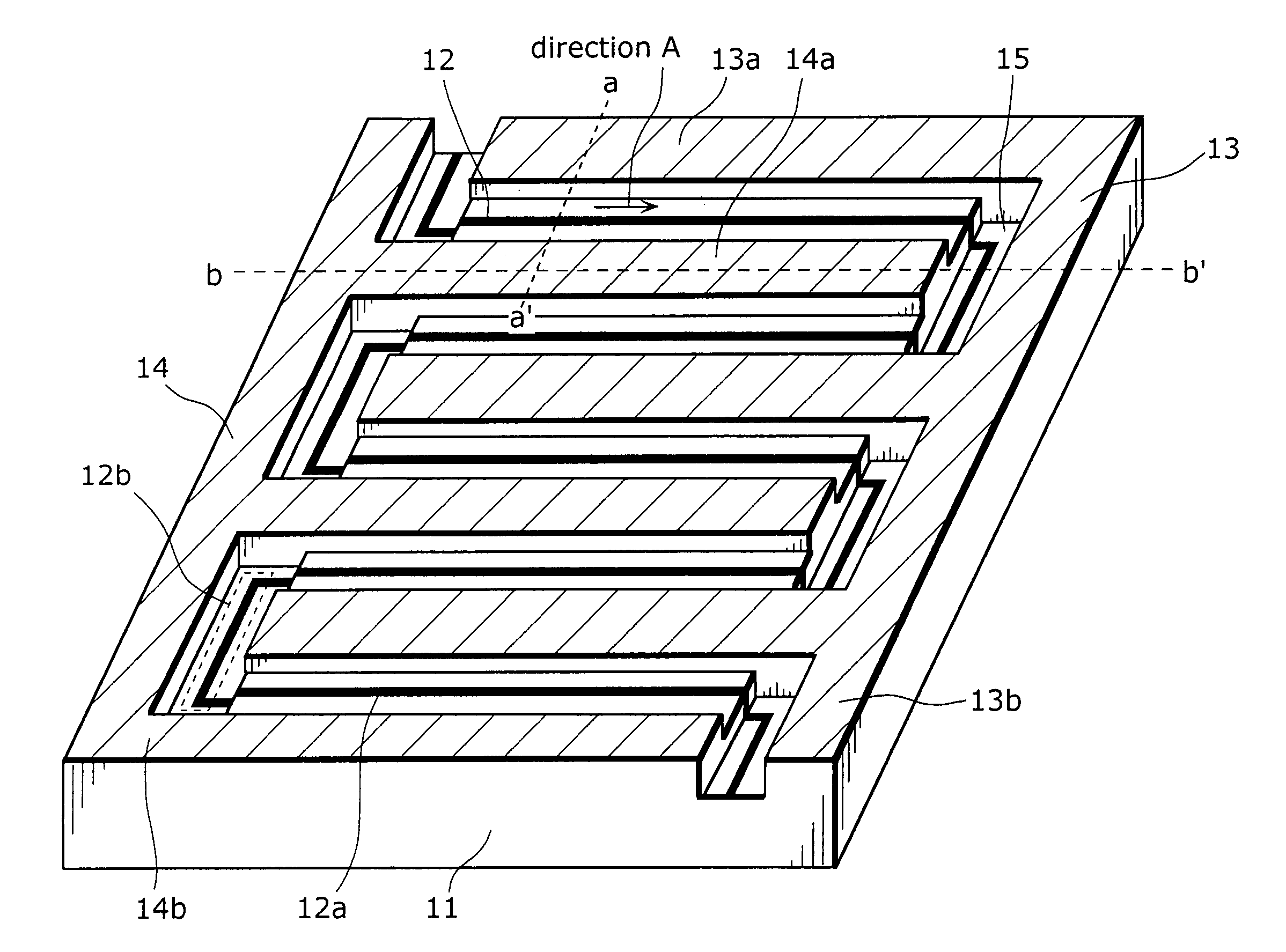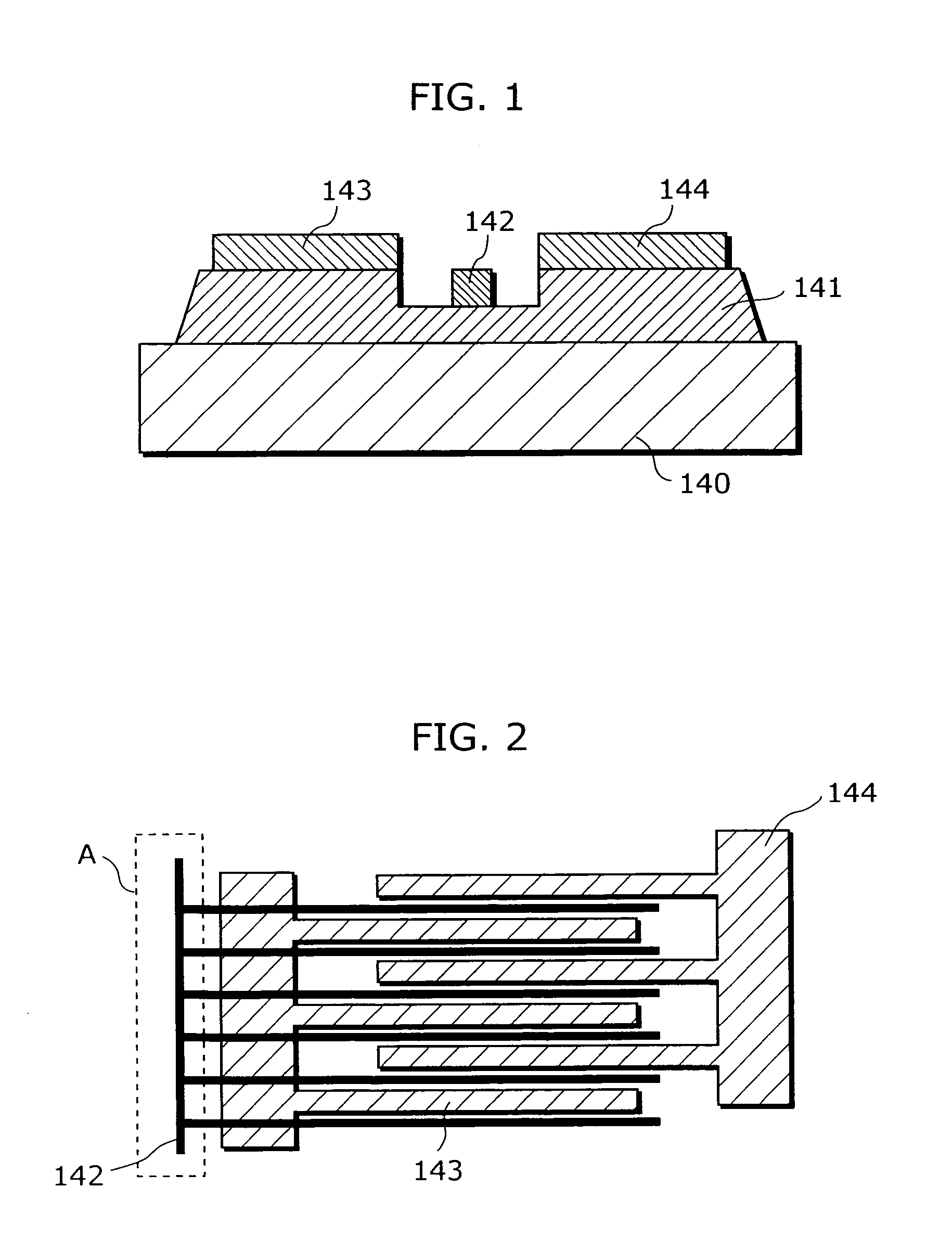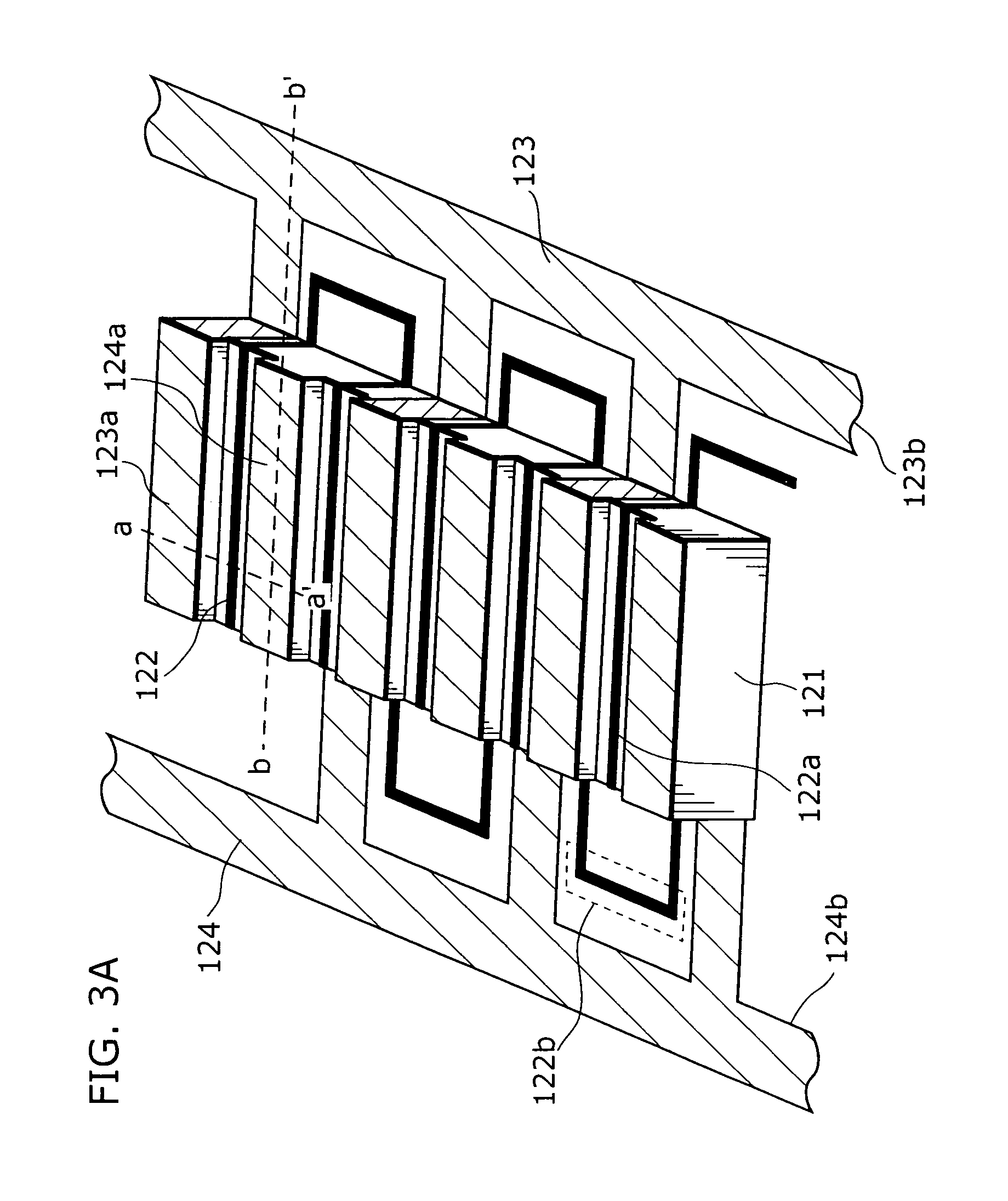Field-effect transistor
a field-effect transistor and transistor technology, applied in the field of field-effect transistors, can solve the problems of loss, isolation, degradation of various high-frequency characteristics, etc., and achieve the effects of reducing side gate effect, preventing the miniaturization of transistors, and reducing transistor characteristics
- Summary
- Abstract
- Description
- Claims
- Application Information
AI Technical Summary
Benefits of technology
Problems solved by technology
Method used
Image
Examples
first embodiment
[0046]FIG. 4A shows an outer view of the GaAs FET according to the present embodiment and FIG. 4B shows a top view of the GaAs FET, while FIG. 4C shows a cross-sectional view of the GaAs FET, at the line b-b′ shown in FIG. 4A, and FIG. 4D shows a cross-sectional view of the GaAs FET at the line a-a′ shown in FIG. 4A.
[0047] The GaAs FET is comprised of a substrate 31 made of semi-insulating GaAs, and an epitaxial layer 30 formed by mesa separation due to an element separation region after a semiconductor layer is grown by crystal growth on the substrate 31. The epitaxial layer 30 includes the following layers which are sequentially stacked: a buffer layer 332 which has a thickness of 1 μm and is made of undoped GaAs, for alleviating lattice mismatch between the epitaxial layer 30 and the substrate 31,; a buffer layer 33 made of undoped AlGaAs; a channel layer 34 which is made of undoped In0.2Ga0.8As with a thickness of 20 nm, and in which carriers run; a spacer layer 35 made of undo...
second embodiment
[0060]FIG. 6A shows an outer view of the GaAs FET of the present embodiment and FIG. 6B shows a top view of the GaAs FET, while FIG. 6C shows a cross-sectional view of the GaAs FET at the line b-b′ shown in FIG. 6A and FIG. 6D shows a cross-sectional view of the GaAs FET at the line a-a′ shown in FIG. 6A.
[0061] The GaAs FET is comprised of a substrate 31 and an epitaxial layer 30. The epitaxial layer 30 is structured by sequentially stacking the buffer layers 32 and 33, the channel layer 34, the spacer layer 35, the carrier supplying layer 36, the Schottky layer 37 and the contact layer 38. Here, the source electrode 13 and the drain electrode 14 are formed on the contact layer 38. In the area between the source electrode 13 and the drain electrode 14, etching is performed on the contact layer 38 so that the surface of the Schottky layer 37 is exposed as a surface of the epitaxial layer 30, and the gate electrode 12 is formed on the Schottky layer 37 thus exposed.
[0062] The GaAs F...
PUM
 Login to View More
Login to View More Abstract
Description
Claims
Application Information
 Login to View More
Login to View More - R&D
- Intellectual Property
- Life Sciences
- Materials
- Tech Scout
- Unparalleled Data Quality
- Higher Quality Content
- 60% Fewer Hallucinations
Browse by: Latest US Patents, China's latest patents, Technical Efficacy Thesaurus, Application Domain, Technology Topic, Popular Technical Reports.
© 2025 PatSnap. All rights reserved.Legal|Privacy policy|Modern Slavery Act Transparency Statement|Sitemap|About US| Contact US: help@patsnap.com



